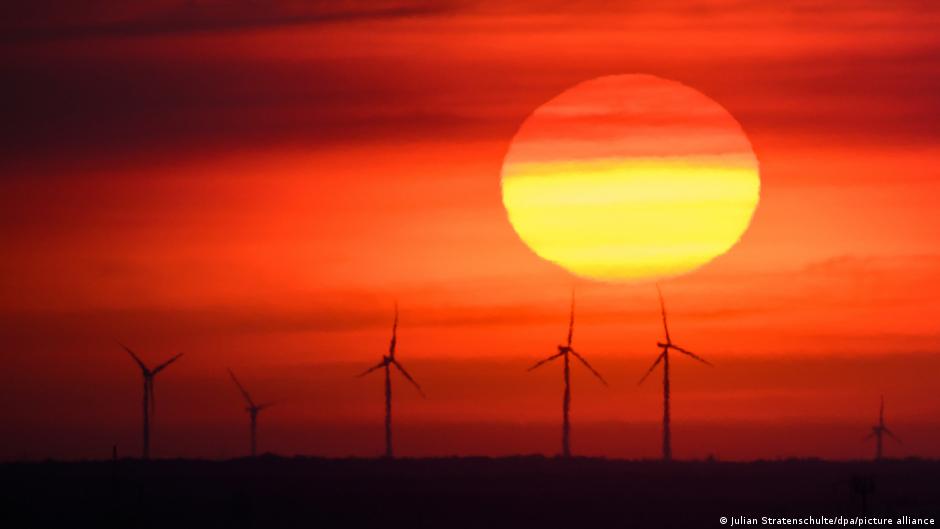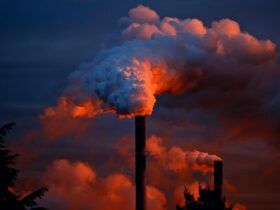As the Paris Agreement was signed in 2015, tears were shed, world leaders shook hands and attendees of the UN COP21 climate summit gave a standing ovation.
It marked an important moment in climate action. For the first time, nearly 200 countries adopted a binding treaty to limit global warming to well below 2 degrees Celsius (3.6 degrees Fahrenheit), while attempting to limit the increase to 1.5 degrees.
Scientists consider the 1.5°C limit a vital line of defense against the most serious and irreversible damage of climate change. The UN has now said that overdoing it, at least temporarily, is “inevitable” with “disastrous consequences” for the world.
Despite some remarkable leaps in climate action since that moment in Paris, experts warn that the world stands at a turning point. As countries continue to burn oil, gas and coal, temperatures are rising, causing deadly storms, floods and heat waves.
The past decade has been the hottest on record, with last year topping the list as the most severe.
Temperatures have increased since the Paris Agreement
As world leaders gathered in Belém, Brazil, for this year’s global climate summit, COP30, scientists warned that, no matter how much the world has already warmed, every fraction of a degree still matters – making the difference between the safety and suffering of millions of people.
Rising heat is killing about one person every minute, and air pollution from the burning of fossil fuels is killing an estimated 2.5 million people every year.
According to research published in, it is also having a significant impact on the economy, last year the global economic loss reached 304 billion dollars. KnifeA peer-reviewed medical journal.
Meanwhile, vital ecosystems are being pushed beyond their limits. This year, the world has passed its first climate “tipping point,” a threshold that triggers irreversible change, in which warming oceans cause mass coral die-offs. Coral reefs are one of the world’s most biodiverse ecosystems, supporting a quarter of all marine life.
Scientists warn that other tipping points, such as the collapse of the Amazon rainforest and the collapse of vital ocean currents, are dangerously close.
What’s happening to emissions?
This critical situation is driven by the continued burning of fossil fuels in the decade following the Paris Agreement. Last year, greenhouse gas emissions reached record levels and are now 65% above 1990 levels.
For the Paris Agreement goals to be within the world’s reach, emissions must already have peaked and begin to decline. but a recent analysis There was no sign of recession.
Absolute emissions soared last year with human activities – namely the burning of coal, oil and gas – sending a record 53.2 gigatonnes of CO2 equivalent emissions into the atmosphere.
Two-thirds of this came from just eight economies: China, the US, the EU, India, Russia, Indonesia, Brazil and Japan. Of those big polluters, only the European Union and Japan reduced their annual emissions compared to 2023.
Most of it comes from the energy sector, which powers our lives and economy.
What has been achieved since 2015?
Although overall climate action is seriously lagging, some notable progress has been made.
Global growth in renewable energy has exceeded even optimists’ expectations. Falling costs are helping accelerate investment in clean energy, which is now doubling investment in fossil fuels.
The share of global energy provided by renewables has more than tripled since the Paris Agreement.
In 2024, the world experienced the largest-ever increase in renewable energy production, now providing 40% of global electricity. Solar and wind overtook all electricity demand growth in the first half of this year, overtaking coal for the first time.
Global solar capacity is four times greater than estimated in 2015, doubling every three years. Wind has tripled, according to analysis by the Energy and Climate Intelligence Unit, a UK-based non-profit.
China leads the pack, having installed more solar capacity last year than the rest of the world combined – now 1,000 times more than in 2010.
Over the past decade, electric vehicles have grown from about 1% of car sales to almost a quarter. The world is on track to meet the Paris Agreement target of 100 million vehicles on the road by 2030, ahead of schedule.
Yet there are important caveats to this progress. Renewables may be breaking records, but coal is also breaking records: The dirtiest fossil fuel reached a record high in overall global use last year. And while more money is being poured into green energy, public financing for fossil fuels has also increased to $1.6 trillion (€1.37 trillion) per year.
Will the world meet the goals of the Paris Agreement?
Experts warn that current climate action is still seriously derailing.
Without the Paris Agreement, the world could face 4C of warming by the end of the century. Under the agreement, countries must submit national climate action plans. If fully implemented, it is predicted to limit temperature rise to about 2.3 to 2.5 Celsius. Yet, even under that less drastic scenario, the world would face far more extreme heat, storms and rising sea levels.
Before the climate summit in Belém, countries were still struggling to submit new climate commitments. A new UN analysis of national pledges estimates that global greenhouse gas emissions will be reduced by about 12% by 2035 compared to 2019 levels.
According to Hall, the world needs to see a huge acceleration in ambition and emissions reductions across all sectors. Climate Action Status Report,
This includes phasing out coal 10 times faster this decade, increasing efforts to prevent deforestation by nine times, doubling the growth of renewable energy, increasing global climate finance by nearly $1 trillion per year, and rapidly expanding public transportation infrastructure in the world’s most polluted cities.
Additional reporting by Katharina Schantz.
Edited by: Tamsin Walker






Leave a Reply